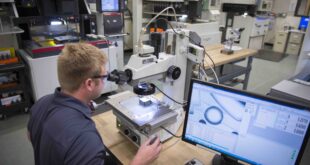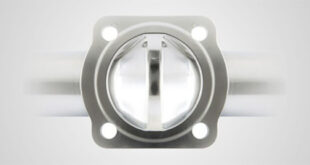Marc Tagher assesses the stiffness of different composites, discusses how hybrids combine the best of multiple fibres and explores thin-wall tubes’ suitability for different product applications, such as tool handles, tripods and sporting equipment
When it comes to thin-wall tubes for applications requiring high stiffness and robustness, metals were traditionally the material of choice because of their high stiffness and relatively low price. Historically, composites were not the first choice because glass fibre composites, while lighter, may not have the necessary stiffness, and carbon fibre, while stiff enough, is often too expensive for most common applications.
Generally, thin-wall composite tubes are those with thicknesses between 0.5mm (about 0.02in) and 2mm (about 0.08in) and are used for various applications across diverse industrial applications, such as camera tripods, window cleaning poles, IMR equipment, telescope poles, medical applications, sporting equipment and even camouflage netting support poles.
Sustainability trends and light-weighting are now pushing manufacturers to improve operational efficiencies by reducing weight without sacrificing mechanical properties. We are often asked could composites replace traditional materials in these applications?
Tune mechanical properties to the application
Aluminium, which has been the traditional material of choice for many, has a stiffness of 70 gigapascals (GPa). Glass fibre, which is often the first choice for composite solutions because of its great performance to cost ratio, provides the desired weight savings compared to aluminium for tubes of equal dimensions but only has a stiffness of 35 GPa. Therefore, to match the stiffness of aluminium, usually thicker tubes are needed, impacting existing design specifications and reducing weight savings.
Carbon fibre composites tick all the boxes in terms of mechanical properties as they are much lighter than metals and boast much higher stiffnesses. Basic carbon fibre tubes have a stiffness of 120GPa and high-modulus carbon fibre tubes have stiffnesses up to 210GPa. However, carbon fibre composites are also more expensive than metals. This is where hybrid composites come in, providing the best of both worlds.
Hybrid composites, made from a combination of glass and carbon fibres, allow manufacturers to tailor mechanical properties for any given application without changing the specified dimensions of the tubes or poles by adjusting the ratio of glass fibre to carbon fibre in the structure. For example, for window cleaning poles, a customer might require a pole predominantly made from glass fibre for cleaning two-story buildings but need something with a higher ratio of carbon fibre, providing extra stiffness, for poles intended for cleaning five-story buildings. This is a simple task for an experienced composites partner to produce composites tailored for your specific application.
Benefits of volume pull-winding manufacturing
For high volume cost-competitive composite production, continuous manufacturing processes, such as pultrusion and pull-winding, are advantageous because they ensure consistent high-quality production and high levels of repeatability. Pull-winding is particularly useful for manufacturing hybrid composites because it allows for cross-directional control of mechanical properties and selective reinforcement of the thin-wall composite tubes, meaning there is optimal use of material and costs are kept as low as possible.
Pull-winding combines the unidirectional alignment of fibres with the helical winding of reinforcements, resulting in the ability to control unidirectional fibres and helical winds, from a few degrees up to 90 degrees.
Manufacturing thin-wall composite tubes is possible using other manufacturing techniques, such as filament winding, however, these require more manual steps and are more suited for thick tubes with large diameters. Furthermore, because they involve more manual steps and smaller manufacturing volumes, it is often the case that thin-wall composite tubes manufactured using filament winding are more expensive.
Marc Tagher is Area Sales Manager for the US for Exel Composites.
 Engineer News Network The ultimate online news and information resource for today’s engineer
Engineer News Network The ultimate online news and information resource for today’s engineer

